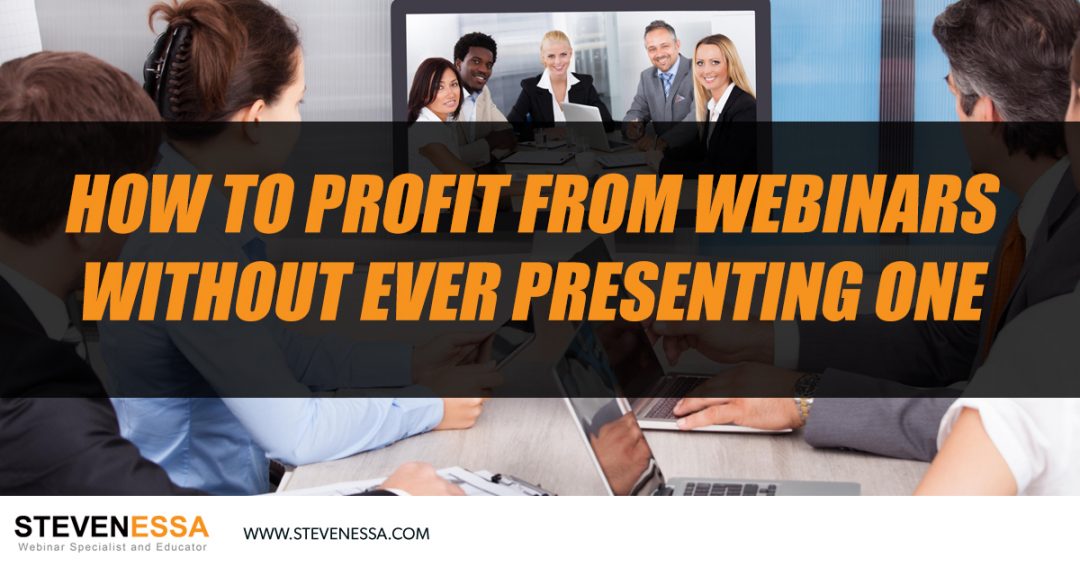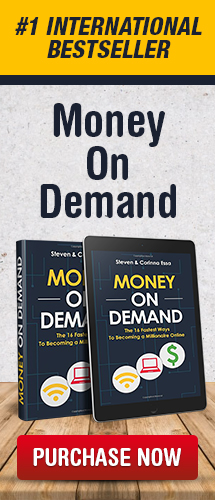Some of the main reasons that stop people from leveraging the power of webinars, is usually not having a product, not having a mailing list, a lack of confidence when it comes to presenting or simply having the assumption that you have to have “the gift of the gab”. If that was the case, most people wouldn’t be able to actually profit from the power of webinars. There are other strategies that enable anyone to profit from webinars, without having a list, without having a product and without actually creating a webinar in the first place. We’ve named this strategy the “webinar JV broker” strategy.
The JV broker strategy is a very exciting business model as you don’t have to present a webinar, market a webinar or create a product to sell on a webinar.
All that a JV broker needs to do is to link database owners (AKA list owners) with webinar owners and negotiate a deal where each person involved gets a cut.
In other words, with the JV Broker strategy, you bring a webinar owner and a list owner together and get a cut of the sales generated.
What makes this such a powerful strategy, is that you don’t have to ever build a mailing list, worry about traffic or put together a webinar. A webinar JV broker can literally start generating cash flow within days.
The main skills required to be a sought-after JV broker are networking, negotiating, and the ability to build relationships with key people.
In order to become a webinar JV broker, you need to follow 5 easy steps.
Step 1: Locate a webinar owner
Social media is most probably the fastest way to locate webinar owners, as they often promote their webinars on social media.
Use the built-in search engines that exist on social media. If you type ‘webinar’ into the search box, it will instantly list all the posts that contain the keyword ‘webinar’.
Step 2: Contact the business owner
Should you have located a few webinar marketers on social media, the easiest way to contact them is through social media itself. Linkedin, for example, allows you to message people whether or not you’re connected to them if you upgrade to their ‘Premium’ service. Alternatively, you can contact them through their website.
If the webinar owner has secretaries or assistants, it might require a few more attempts until you can secure a meeting with the decision maker.
A typical message can look like this:
| Hello [Firstname],
I hope you’re well. I’m a big fan of your work!
My name is [Your Name] and I’d like to discuss the opportunity of sharing your webinars with hundreds—if not thousands—more people.
I’ve helped several business owners, in similar industries to yours, tap into larger audiences, and increase their sales dramatically, by putting them in touch with list owners. I’m confident I can help you achieve the same with your webinars.
Would you be interested in scheduling a call to discuss this further?
I look forward to hearing from you.
Kind regards, [Your Name]
|
The first message should be short, and should emphasize how you can help them generate more sales. No business owner would decline an opportunity to talk further about how they can increase their sales, so get ready to schedule lots of calls.
Step 3: Phone the business owner
If emails and messages don’t lead to any response, pick up the phone. In the first phone call, your aim is to schedule a ten-minute conversation, either in person or over the phone. Don’t try to pitch your business proposal during an unsolicited call. It leaves a bad impression.
Instead open the conversation by saying:
“Hi firstname,
My name’s John, and I’ve been watching your webinars. I’d like to discuss the opportunity of increasing your sales considerably. I know I’m interrupting your day right now, so would you like to schedule some time for a meeting or a call? It’s going to take just ten minutes, and I can show you how all this can work, without you putting any time or effort into it.”
Step 4: Send a proposal
When there’s a firm indication from a business owner that they’re willing to give up a percentage of the sales generated in exchange for more exposure, the next step is to send a written proposal. In the proposal, you stress that the terms of the proposal can be negotiated. By putting together a written proposal it not only shows you’re serious but it will also differentiate you from others.
Most people never put together written proposals and since most people in business get flooded with opportunities, the ones that usually stand out and get considered are the ones from people who take the time to put their idea in writing.
In the first draft of the proposal, you educate the business owner about your responsibilities as the JV broker, and their responsibility as the webinar owner. This starts the JV process and avoids costly misunderstandings.
Step 5: Contact a list owner
When contacting a list owner, you’ll need to sell the idea of them generating more revenue from their existing audience while not having to deliver additional products or provide further customer support.
To locate list owners, you can start by simply performing a search on Google, and typing in keywords related to the industry you’re after. For example, should the webinar owner be in the weight loss industry, promoting information on how to lose weight through diet and exercise, you could look for fitness centers, personal trainers and even online food supplement stores. Once you locate a few, check their website to see if they capture people’s names and emails. If they do, chances are they have a list. Don’t be afraid to subscribe to their list to get more familiar with their style of email marketing and their business in general. After exploring their business further and if you feel they could benefit from promoting someone else’s webinar, get in touch with them either by phone, email or social media.
How you get paid from putting together a list owner and a webinar owner together is up to you of course and depends on your negotiation skills. You could either agree to be paid a flat fee or a commission on sales.


